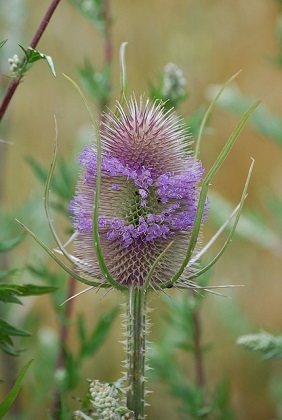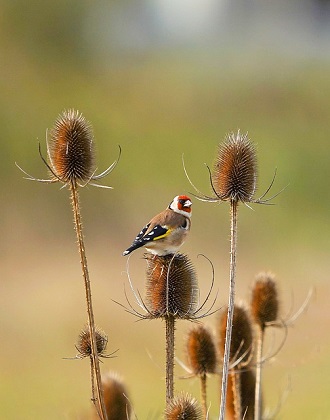Living Planet
Nature · Earth · ClimateNature Notes: August 2021
HERE COMES THE SUN...?!
As I write in mid-July, Slinfold is sodden. It's hot and humid. We've had weeks of wet and wellies, slithering, treacherous un-maintained muddy footpaths, rambling brambles reaching out with tentacled thorns that stab at eye level, nettles up to our necks and branches weighed down by the rains, sending rivulets of water down our backs. However, the resulting abundant growth in dusky peach feathered-grass meadows, too wet to be cut, has been an incredible blessing for our insects, especially moths and butterflies. I've never seen so many chess-board Marbled Whites as they flit around upright purple thistles and Knapweed. As I wend my way through thigh-high sheep and cattle fields, a flurry of burnished sunset Commas, Small Coppers, Meadow Browns, Ringlets and Small Tortoiseshell butterflies also flutter up from my feet and 'air-skip' in fours, fives and sixes, along with single Scalloped Oak, Dotted Fan-foot and Golden Pearl Moths. A Silver-washed Fritillary swoops down out of no-where, surprising us both as it kisses my lips.
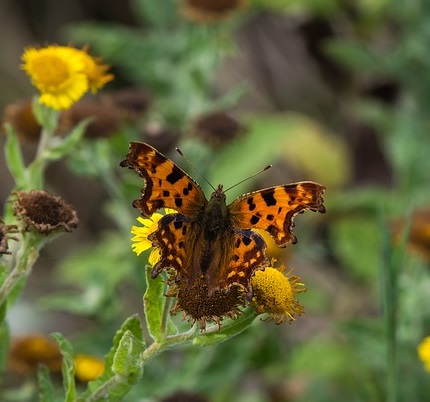
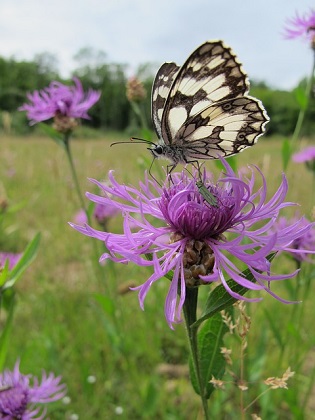
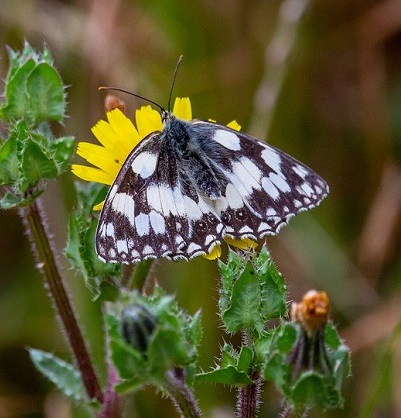
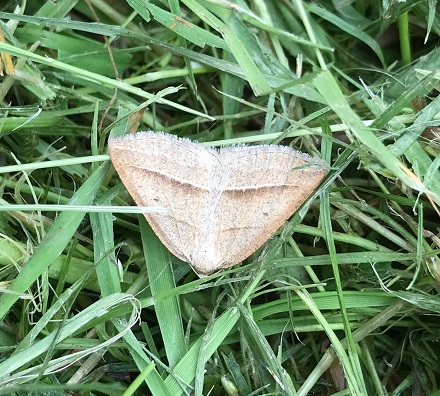
I currently have anthills the size of molehills in my clover-clad lawn, where the Green Woodpeckers regularly feast whilst shrieking their enjoyment and as the wild strawberries along my shed timed their appearance to coincide with Wimbledon, clouds of flying ants were picked up by the meteorological office on their weather radar over London and the South East in time for the women's final. Common-blue Damselflies, Beautiful Damoiselles and a mixture of iridescent Dragonfly patrol the air-space over our streams although Migrant Hawker's, who tend to wander further afield, should be found hunting around our hedgerows in August and September.
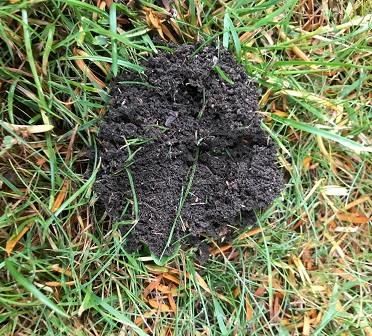
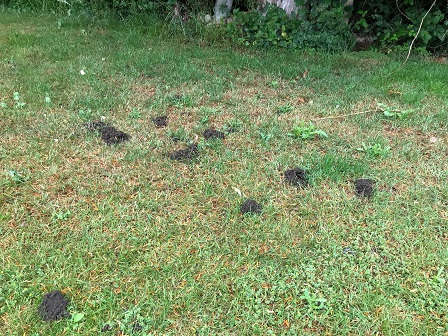
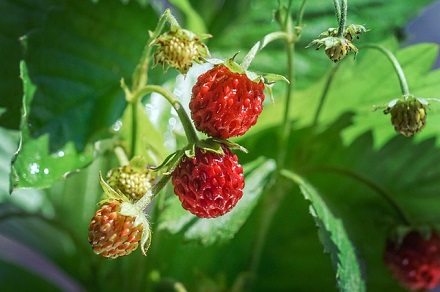
I've seen more Bees recently sheltering under flower heads than on the wing, but was really excited by the discovery of a White-tailed Bumble Bee nest found in a disused rabbit hole on the edge of a field. It looked like there was some honey-comb amongst the bees inside who I could see were slightly dazed and groggy and some outside the entrance were dead. There were no tell-tale signs of the culprit of the 'raid' and a lack of footprints left on the soft earth outside but there's been evidence in the past of foxes, badgers, weasels, moles, shrews, voles, mink, field mice, grey squirrels and even crows predating on bumble-bee nests. Robins and Great Tits have also been known to feed on individual bees on occasion, firstly rubbing them on branches to remove their stings. According to The Bumblebee Trust these predators have co-exited with bumblebees for thousands of years but it's our human-caused problems like habitat loss, pesticide exposure and climate change which have exacerbated the situation.
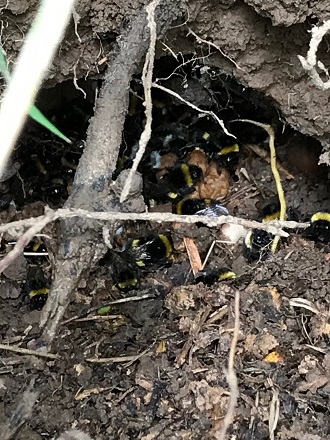
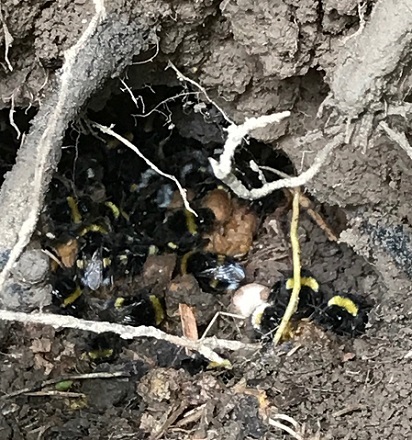
Apart from the high temperatures, the misty mornings have been more redolent of Autumn, complete with fungus on trees and thick spider webs - stretched across large, lush leaves and the crops in the fields, one with a tunnel full of morsels including a huge slug. Red kites have been swirling up above and one evening a Kestrel pounced on a mouse on my window-sill leaving a horrific streak of blood that made feel instinctively protective of the industrious blackbird nearby, currently building her second nest - her first destroyed by my neighbour. Nature can be cruel but humans can too. It's hard for them out there. However, there is hope in the hedgerows ...
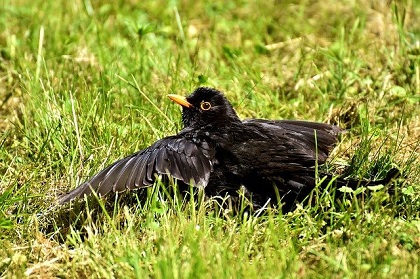
It was dry and sunny up and down the country on St, Swithin's Day (15th July) and fine weather has been forecast as we step into August - traditionally cricket and grasshopper month and a time when blackbirds tend to moult as they recover from nesting and feeding their 2 broods. I think this may occur a little later than usual, along with everything else this season as they're still nesting. Dark (pigmented) feathers can wear out more than lighter ones and a 'moult' can take a lot of energy and time (several weeks). Although they replace their body and wing feathers in stages, so they're never flightless, they tend to lie low, sheltering amongst summer shrubs whilst they fatten up again on insects and ripening fruits, so listen out for the odd chuckle belying their presence.
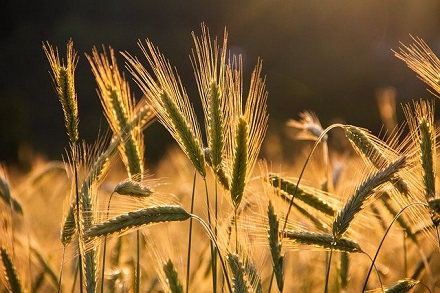
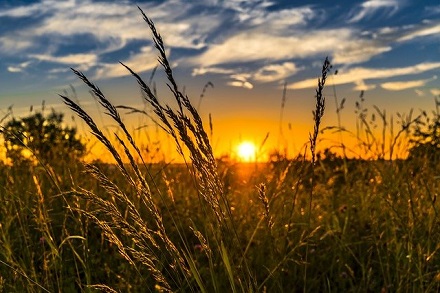
The expected sun should now be drying out our meadows and turning our waving crop fields of thick, deep, wheat, barley and oats, from green to white gold. The royal king of colour is already beginning to spread his Midas Touch, as long grasses are bleached like straw. Soon the teasel's small purple flowers will die back to golden-brown oval spiky seed heads, just ripe for our male goldfinches who use their long, narrow beaks to tweezer out their prize! August should be a time for ripening, indulgence and rest, when all reaches its peak; of balmy evenings and amber sunsets, when our glasses are full of light, crisp wine, nature's larder is plump and juicy, and our lanes and newly harvested fields are bathed in glorious somnolent light.
Roll on our golden summer!!!
